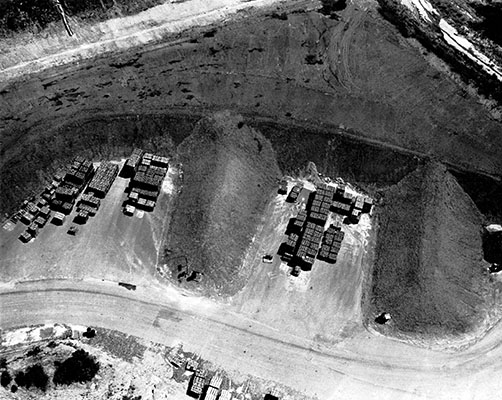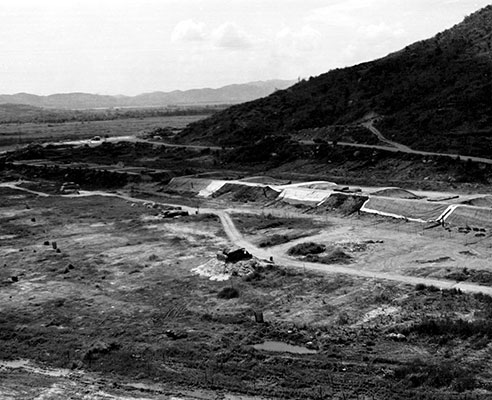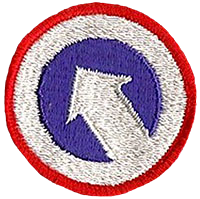DOWNLOAD
The 528th Special Operations Support Battalion is one of the few Army special operations units that has evolved from a purely conventional unit into its current specialized role. Other Army Special Operations Forces units can trace their roots to conventional infantry or aviation units, but only the 528th and the 112th Special Operations Signal Battalion can boast that they served in World War II under their own colors (as the 528th and 112th). And of the two, only the 528th has the distinction of having served in Vietnam, as well.
After almost twenty years in mothballs, Headquarters and Headquarters Company (HHC), 528th Quartermaster Battalion (Petroleum Supply) unfurled its colors and on 16 September 1969 again took its rightful place in the U.S. Army’s order of battle.1 Activated under the U.S. Army Support Command, Da Nang (USASUPCOMDNG), the 528th Quartermaster Battalion (528th QMB) found itself struggling to fulfill a role for which it was almost completely unprepared.

The 528th QMB’s HHC was organized according to the table of organization and equipment for petroleum supply battalions (TO&E 10-476G), yet the 528th had been specifically activated to provide a command structure for a newly formed ammunition battalion. This discrepancy not only left the company without the proper equipment to perform its mission, but also prevented requisition of personnel with the appropriate military occupation specialties (MOSs)—only twelve of the thirty-two petroleum supply battalion MOSs were transferable to an ammunition battalion, and none of those had anything to do with ordnance.2
While the TO&E was inadequate, the 528th did receive all equipment and personnel organized under ammunition ordnance battalion TO&E 9-86G used by the 274th Fortification and Construction Platoon. The 274th had reorganized itself into the 274th Ordnance Battalion (Provisional) as a stopgap measure between the 336th Ordnance Battalion (Ammunition)’s summer departure and the 528th QMB’s September activation.3

In spite of HHC’s problems organizing, the battalion was able to assume the ordnance control mission for I Corps Tactical Zone (ICTZ) through its subordinate companies and detachments, which were already on the ground and trained in ammunition supply functions. At the same time the 528th QMB activated, it inherited three ordnance companies and a transportation detachment from the 274th: the 40th Ordnance Company (Ammunition), U.S. Army Reserve 295th Ordnance Company (Ammunition), 571st Ordnance Company (Ammunition), and the 263rd Transportation Detachment (Crane J B). Within a week, four more units were attached to the battalion, each consisting of one officer and nine enlisted men trained in explosive ordinance disposal (EOD): the 59th Ordnance Detachment (EOD), the 133rd Ordnance Detachment (EOD), the 287th Ordnance Detachment (EOD), and the 269th Ordnance Detachment (EOD).4
The first month of the 528th QMB’s tour in Vietnam was consumed with getting itself and its subordinate units organized sufficiently to perform the ordnance control mission. At the same time, as new ordnance detachments were being attached to the battalion, one of its inherited companies handed off its mission to a replacement company and rotated back to the United States. The 661st Ordnance Company (Ammunition) moved from Quin Nhon to Chu Lai and assumed the 295th’s mission on 23 September 1969, including all equipment and the more than 50 percent of the company that was not eligible to rotate home with the unit.

The flurry of attachments and detachments and rotations eventually settled down and as of 31 October 1969, the 528th QMB had an assigned strength of 18 officers, 6 warrant officers, and 710 enlisted men.5 By May 1970, the battalion was receiving personnel with the required MOSs in sufficient quantities to fully man the battalion with ammunition personnel.6
The 528th QMB’s mission as the ordnance control for ICTZ was to oversee operation of the Army’s ammunition supply points (ASPs). By November 1969, the 528th was responsible for six ASPs. The 571st Ordnance Company was responsible for ASP 102 at Camp Evans, ASP 103 at Phu Bai, and ASP 101 at Quang Tri. The 661st Ordnance Company was responsible for ASP 105 at Chu Lai and ASP 106 at Duc Pho, and the 40th Ordnance Company ran ASP 107 at Da Nang.7
The work involved in running an ASP ranged from simple inventory controls to the more complicated business of maintaining lot integrity (keeping all boxes from one lot of ammunition together), to rebuilding boxes in order to protect ammunition from the elements, and the dangerous business of disposing of expired or degraded ordnance.
The 528th QMB was responsible for all Army Class V supply (ammunition and ordnance) in the ICTZ, from the moment it arrived until it was either issued to combat units or shipped back out of theater as surplus. The majority of ordnance shipments came by cargo ship from the United States or by intratheater shipment, usually from Cam Ranh Bay. The cargo ships docked at the Deep Water Port, where ammunition loads were transferred to lighterage (shallow draft vessels) and transported to offloading facilities, either further inside Da Nang Harbor and in the inland stream, or further up the coast at the smaller ports of Tan My and Chu Lai.8
By far the most important piece of equipment to the 528th’s mission was the 6,000-pound rough terrain forklift. The forklifts were used every time ammunition needed to be offloaded at an ASP, repositioned within an ASP, issued to a unit, received from a unit, or shipped out of an ASP. Even with intensive maintenance schedules, the eight forklifts authorized to each ammunition company under TO&E 9-17G proved insufficient for the battalion’s needs, especially when each company was responsible for more than one ASP, each in a different location. Forklift shortages impacted the battalion’s overall mission by delaying ammunition offloads, which in turn delayed ship and convoy turnaround times, which in turn further delayed vital ammunition shipments.9
Further complicating the work of maintaining stockage objectives at each ASP were the challenges brought about by monsoon season and the ever-present enemy. The former made it difficult to unload and transport ammunition to the ASPs, and the latter required security measures beyond those usually enacted by an ammunition battalion.
The 528th undertook various plans of action to address seasonal and security challenges. In anticipation of monsoon rains, the ASPs stockpiled as much ammunition as possible so they could handle demands caused by upsurges in enemy activity. Efforts to build up ammunition stocks before projected enemy action related to January 1970’s Tet celebrations, however, were hampered by rough seas and a change in combat tactics. Heavy ordnance stocks became severely depleted as units in the northern ICTZ relied on heavy artillery to prevent enemy buildup before Tet. At the same time that units were drawing heavily on the ordnance, choppy seas prevented timely offloading from cargo ships to lighterage, and from lighterage to piers, which curtailed the ASPs’ ability to maintain even basic stocking levels.10



